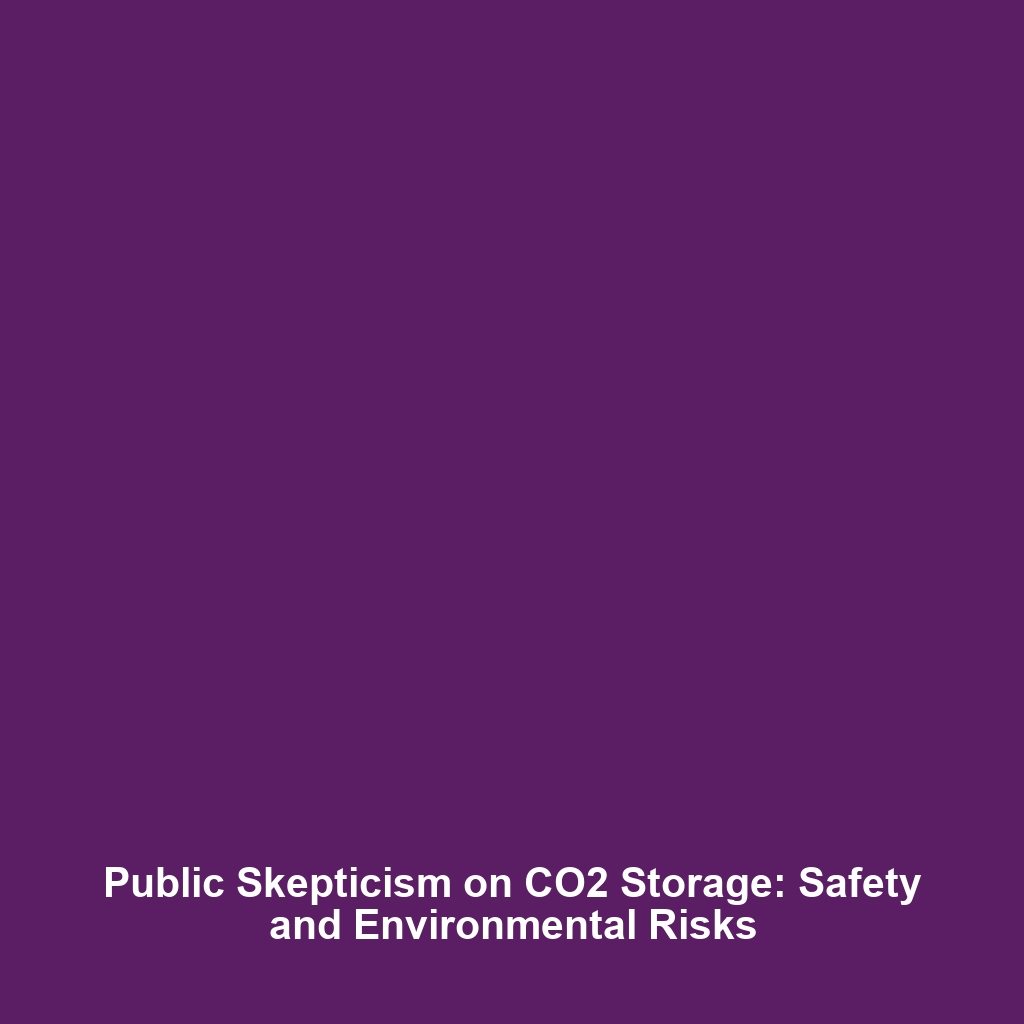Long-Term Stability of Stored CO2 in Carbon Capture & Storage (CCS)
Introduction: The implications of Carbon Capture & Storage (CCS) on climate change mitigation are significant, especially concerning the long-term stability of stored CO2. Concerns about the risks of leakage from underground storage sites have sparked critical discussions in scientific and environmental circles. Ensuring the safety and integrity of CO2 storage is essential not only for verifying the effectiveness of CCS but also for protecting groundwater resources and maintaining public trust in these technologies. Understanding these concerns is crucial in gauging the viability and expansion of CCS in efforts to combat climate change.
Key Concepts
Understanding the long-term stability of stored CO2 is vital in the domain of Carbon Capture & Storage (CCS). Here are the major concepts associated with this topic:
- Geological Sequestration: This involves storing CO2 in geological formations, where the gas is injected into deep underground rock layers.
- Storage Integrity: Concerns focus on whether CO2 can remain trapped indefinitely without leaking into the atmosphere or contaminating groundwater.
- Monitoring Techniques: Advanced methods are being developed to monitor the integrity of CO2 storage sites, ensuring early detection of any potential leaks.
Applications and Real-World Uses
The concerns about CO2 leakage are particularly relevant in practical applications of Carbon Capture & Storage (CCS). For instance:
- The use of CCS in fossil fuel power plants, where CO2 emissions are captured before they reach the atmosphere.
- Enhanced oil recovery (EOR), where injected CO2 helps extract more oil while simultaneously storing the gas underground.
- CCS applications in industrial processes, such as cement production, which is a significant source of carbon emissions.
Current Challenges
Studying and applying Carbon Capture & Storage (CCS) presents several challenges:
- Regulatory Framework: There is a lack of comprehensive regulations governing CO2 storage, leading to uncertainties.
- Public Perception: Concerns about safety and environmental impacts can hinder public acceptance of CCS projects.
- Technological Limitations: Existing technology may not yet guarantee the long-term security of CO2 storage.
- Monitoring Costs: Continuous monitoring for leaks requires significant investment and resources.
Future Research and Innovations
Innovative research is underway to enhance the safety and efficacy of Carbon Capture & Storage (CCS). Key areas of focus include:
- Advanced Materials: Developing new materials for CO2 capture that improve efficiency and reduce costs.
- Enhanced Monitoring Solutions: The use of AI and machine learning to predict and detect possible leaks more effectively.
- New Geological Sites: Exploration of additional storage sites that could offer better security for CO2.
Conclusion
The long-term stability of stored CO2 and the associated risks of leakage represent critical considerations in the implementation of Carbon Capture & Storage (CCS). Addressing these concerns is essential for the technology’s success in mitigating climate change. As research progresses and innovations arise, it is imperative for stakeholders to stay informed and engaged. For further insight into innovative CCS technologies and their applications, visit our related articles.

